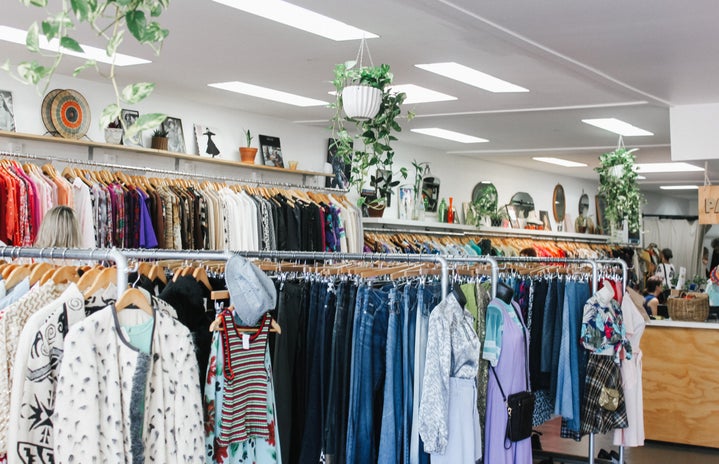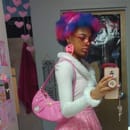The Her Campus National Editors write about products we love and think you’ll love too. Her Campus has affiliate partnerships, so we get a share of the revenue from your purchase. All products are in stock and all prices are accurate as of publication.
One thing about fashion is that it has been a thing for centuries. Some fashion is meant to show status, some is meant to show culture, some is meant to wow people, change the concept of fashion overall; it could even be about music, and maybe even politics. As time goes by, fashion is constantly evolving, changing, and growing to the point where subcultures are born and enjoyed for years. Not only is this about fashion subcultures, but a little bit about the history of them as well.
Lolita: This subculture has been misheard as being related to the book “Lolita” by Vladimir Nabokov, resulting in people believing that this subculture is meant for a fetish or sexual reasons, but it’s nothing like that at all. Lolita was created in the early 1970s in Japan and was meant to just look cute, being decked out in poofy dresses, lace, ribbons, etc, similar to porcelain dolls. Nowadays, Lolita is still being enjoyed in a few small communities around the world. Anyone of any race and gender can be a part of it, but be careful, it’s very expensive. The best part of Lolita is that it doesn’t have to be all delicate and soft, you could do Gothic, Sweet, Old-School, Classic or even Military. If one would like to look at Lolita fashion, they can look through a couple of websites such as Angelic Pretty and 42lolita .
Goth: Being goth doesn’t mean that you have to dress up in black and chains with a pale white face including massive amounts of eyeliner. Goth is a music and political subculture, which means that as long as you are interested and listen to the music and support the political views that goths believe in, then you can be goth without all of the accessories. The goth culture was created in the 1980s in the United Kingdom and was a development from the culture of punk, and has grown in popularity up until today! When it comes to the political side of this subculture, it’s mainly left-wing, so as long as you are on the left side of politics or support the left side without being political, then you could consider yourself a goth! When it comes to fashion, it’s mainly DIY, but you could buy some things from alternative stores if you have the money to, but being goth isn’t exactly supposed to be expensive. Plus, there’s more than one type of goth one could be: there’s Trad (Traditional), Cybergoth, Romantic, Fetish, White, Victorian, Gothic Lolita, Nu Goth, Vampire and Mall goth – though mall goth was considered being a poser at the time since those who would fit the category would buy their clothes/accessories from stores at the mall like Hot Topic while other genres of goths would buy their stuff from other places. Many to choose from, many to try out. If you want to try out the music, I suggest Bauhaus, The Cramps, London After Midnight, Sisters of Mercy, and Siouxsie and the Banshees.
Emo: Emo was created in the 1980s and would be called as being (emo)tional, making music that would be mostly personal and possibly relatable to those who are dealing with more serious topics such as being bullied, excluded, feeling like they don’t fit anywhere, etc. It gained popularity in the 2000s as many bands would come out to make emo music such as Paramore, Panic! At The Disco, My Chemical Romance, Twenty One Pilots, and Saves the Day. During its popularity, the emo community was looked down upon for the way they were dressed, and the music they would listen to was considered to be weird; later people only saw emos as people who were always depressed, who only wore black, and would constantly commit self harm. During that time, many emos would usually wear tight jeans, sometimes with rips in them, an emo band shirt, a choker, possibly a couple of bracelets, wear slanted studded belts and have long hair that usually covered one or both eyes. The community during the 2000s and 2010s wasn’t fully innocent either; it was very toxic. Many claimed that you couldn’t be emo if you weren’t white or listened to a certain band, or even went far enough to say that if you didn’t hurt yourself, you couldn’t be emo. The subculture lost its popularity in the early 2010s, but many are still keeping the style alive.
Scene: Scene is kind of like the emo culture, but with more upbeat music and neon colors. Instead of being seen as depressed and dreadful like emos, scene kids were seen as more joyful and ecstatic. Scene originated in the 2000s with the emos and continued until the mid 2010s. The difference between emo and scene is that emos cared more about the music, as the scene kids cared more about the fashion. For fashion, the best one can do is put together an outfit that looks emo, but instead of it being all black, it’s usually neon with certain patterns like stripes, animal prints, or stars. A few fictional characters were very popular during the era of scene, basically the icons of scene like Gir from Invader Zim, Domo, Gloomy Bear, and Skelanimals. If you want to try and listen to the music, I suggest Millionaires, S3RL and 3OH!3.
Gyaru: Another fashion culture I adore is Gyaru. Gyaru was created in the 1970s but had a boom of popularity in the 90s and 2000s. It originated to go against the beauty standards of Japan at the time. The standards were that one would have dark, usually black hair, pale skin, little to no piercings, and dress normally or basic. Gyaru was the complete opposite of that. They would tan their skin, wear over-exaggerated make-up, get piercings, dye or bleach their hair, etc. Some would even go out of their way to act vulgar or not as the standard wanted them to act. There are many subcultures within Gyaru, like Kogal, though this subculture is only for those who are in high school and is claimed to not be an actual part of Gyaru since high school students are called Kogal in a way regardless. Next is Manba, which is connected with Kuro Gyaru, Ganguro and Yamanba. Though they are all together, they’re slightly different based on the time frame of the creation of the subculture and the way one does her make-up from what I heard. Hime Gyaru is my favorite as it’s associated with pink, bows, frills and everything cute. Hime Gyaru is seen as the princesses in the subculture based on their cuteness. Gyaruo is basically the male version of Gyaru, which means that men can be a part of the Gyaru subculture! Gyaru isn’t popular in Japan anymore, but has gained popularity internationally.


